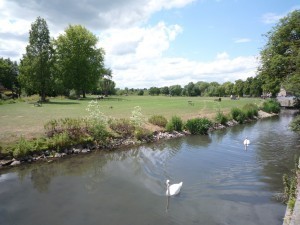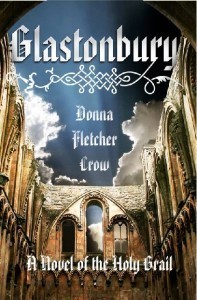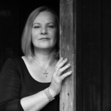C.F. Dunn's Blog, page 16
February 9, 2013
Flesh and Bones
 The discovery of the skeleton of Richard III, and the subsequent media frenzy, has reawakened intense debate over the nature of the man. Now that we have a better idea of his physical features – from the curvature of his spine to his facial reconstruction – the spotlight will again fall on whether he was a ‘good’ or a ‘bad’ man.
The discovery of the skeleton of Richard III, and the subsequent media frenzy, has reawakened intense debate over the nature of the man. Now that we have a better idea of his physical features – from the curvature of his spine to his facial reconstruction – the spotlight will again fall on whether he was a ‘good’ or a ‘bad’ man.
This has long been debated; in fact this has been the subject for conjecture for nearly five centuries, so much so that this king – who reigned for a little over two years – has captured worldwide attention and a loyal following. Over 3000 people are members of The Richard III Society, an organization dedicated to research into the life and times of the last Plantagenet king. Not whitewashing – as some detractors habitually insist – but a thorough investigation to restore balance to the debate.
Richard was undoubtedly the victim of the Tudor victory after the Battle of Bosworth on the 22nd August, 1485 in more ways than the loss of his life. That he should fall foul of the Tudors’ need to establish themselves on the throne to which they had poor claim, was inevitable. That this legacy should have such an abiding fascination, remarkable.
Partially, I suspect, many people like to dwell on the macabre. Then there is the all-too human tendency to pigeonhole individuals using neat, easy descriptions: Philip the Good, Charles the Bold, Sven Forkbeard. And a generation ago, children were still being taught that Richard was responsible for the deaths of a multitude of late medieval notables including Edward, son of Henry VI, Richard’s brother, George (remember the butt of malmsey?), and even his own wife. Richard was the king history loved to hate; a larger-than-life figure, whose supposed actions required nothing more than a cursory glance and a grimace. He was made easy to despise. It takes effort to look below the surface; what is more, it requires patience, perseverance, an open mind, and more original and untainted sources than we have knowledge of.

Boar badge insignia of Richard III
And keeping an open mind is nigh on impossible if you have been brought up in a culture where there are frequent negative references to this man. Many, of course, derive from that brilliantly contrived Shakespearian character. Indeed, no documentary on Richard is complete without film clips of Olivier’s charismatic rendition. Should we resent Shakespeare and his ilk for painting a memorable – if inaccurate – picture? Should we decry those historians and novelists who revert to the standard descriptors any more we should the ardent loyalists who do little to advance their cause by using emotive language? Not at all. For the truth is that without these polarized opinions, Richard would still be buried under a council car park – forgotten, unloved – fallen into obscurity as his brother Edward IV has done: a footnote in history before the onset of self-serving Tudor mythology. Interest in Richard III lives because both sides of the argument refuse to let their version of the king die.
The Richard III Society has its work cut out in establishing a balanced evaluation of Richard’s character and reign, but it is a battle worth fighting to establish a closer representation of the truth than has formally been presented. The point where science and obsession came together to reveal the whereabouts of this man was a historic moment. Whatever the outcome of the debate, future research will surely be stimulated by the extraordinary discovery that gave Richard back to the world, and reveal more about the life of this remarkable man.
[image error]
January 26, 2013
By the Book
I woke up tired this morning.

I am not a number
Yesterday, we attended a Parents’ Consultation with Child 2. We left it feeling frustrated and filled with a deep gloom. This was not because Child 2 had – in any way – been found wanting; in fact her teachers praised her attitude and behaviour. No, it wasn’t her that filled us with despondency, but the system that consistently fails children like her.
Child 2 is dyslexic. Not very, mind you – she can decode most words, her spelling is pretty good, and she is organised enough to get through each day. She does pretty well with her coursework and always hands homework in on time. Anything she might lack in terms of being an academic high-flyer, she more than makes up for in sheer determination and the sunniest disposition you could hope for in an individual. Except when it comes to exams.
She had returned from her trial exams (which we used to call ‘mocks’) before Christmas with mixed feelings.
“How did they go?” I asked her when she climbed into the car after the first day of exams.
“It was OK,” she said, “but I didn’t finish the paper.”
“Why?” I asked, wondering, as many parents must do, whether I had failed to support my offspring sufficiently.
“I ran out of time.”
My heart sank. This was a familiar cri de coeur.
“It took me too long to read the questions and understand what I had to do. And although I knew the answers, I couldn’t find them and get them in order quickly enough. I can’t think because everything is in my head all at once and I can’t select what I need. I can’t organise the information into sentences. It is like having everything and nothing all at one time. I can see billions of words, but I can’t pin them down. ”
“Never mind,” I smiled more encouragingly than I felt; “you tried your best. Let’s see how the rest of your exams go and then see what we can do.”
The rest followed a predictably erratic pattern: some she managed to finish, the rest she failed to complete.
So, yesterday evening, we sat in front of the specialist teacher.
“I know what you are going to say,” she said before we said anything, “but your daughter is already getting 15% extra time and the use of a laptop.”
“Yes, but she is still not able to finish her exams. What she is able to complete she does really well on, so it is not a question of knowledge, but a matter of time. She simply can’t retrieve and record the information quickly enough in exam conditions.”
A piece of paper is thrust under my nose showing the results of screening tests.
“As I’m sure you know because of your own experience at a specialist school,” she said, “the examination boards will only allow 25% extra time if one or more scores are at 84 or below. Your daughter’s scores are all above.”
My husband shifted in his chair, but remained grimly silent.
“I understand the guidelines of the examinations boards,” I replied evenly, “but a case can be made in special circumstances in which a pattern of need can be established, and we can clearly show that in exams, our daughter is not able to finish the papers. As a result, her results are down by between one and two predicted grades.”
The smile on the woman’s face became fixed. “She can’t have any more time; it wouldn’t be fair on the other candidates. The exam boards are clear.”
I did a double-take.
“How is it fair on our daughter if she is penalised for getting scores above 84 yet she can’t get the grades of which she is capable because she can’t finish the exam for lack of time?”
By this time, the woman’s face had become stony. “She needs to learn exam techniques.”
I sighed. “Granted exam techniques will help, but that will not stop the confusion of information in her brain that she has to fight every time she wants to write a sentence.”
“The training course I went on made it very clear,” she said, pushing the list of numbers closer across the table towards me. “I don’t want to be accused of malpractice.”
There was nowhere we could take this conversation. It was as if we came from opposing views and it reminded me sharply of one of the reasons why I became a dyslexia specialist in the first place. Child 2 aside, how many other children, students, and adults are caught in this trap: functioning at an above average level, and yet not able to achieve their full potential because the test results just do not reflect the reality of their difficulty?
Potential: there’s a word that is bandied about by many schools; yet how can a person’s full potential be realised when they are referred to in terms of test results on a piece of paper?
“Average is good enough,” this same specialist once told me when discussing Child 1, who has similar difficulties. “Why should your daughter be given an advantage over students who are average?”
I frowned, wondering which of us had missed the point. “Because she is struggling with a specific difficulty that is stopping her from achieving her best. It’s like telling someone with a mobility issue to run a race with able-bodied athletes and then taking away his crutches. If all she can achieve is an average set of results because that is her potential, that’s fine. But she is capable of more, which she clearly demonstrates when she has the time to finish the paper.”
As we left the Parents’ Consultation later that evening, demoralised by the lack of flexibility in the exam system that might prevent someone doing their best, it occurred to us that not once, in the entire conversation, had the specialist referred to our daughter as an individual. Our child had been reduced to a set of numbers.
If this is a familiar scenario and you have come up against the system at school, work or another situation, I’d like to hear your views. Is this a common problem, or is it just me?
January 14, 2013
Spending Time
The last few weeks have seen a mountain of activity in our household. OK, so Christmas is a major event for us, and New Year brings its own round of family visits which we wouldn’t be without, but this year I had additional tasks, which kept me occupied right up to the very knuckle.
With the upcoming publication of Death Be Not Proud in April (in the UK) and July (in the USA), there were the inevitable last-minute editorial notes to consider, the writing of the acknowledgements, and the dedication. But this time I was also asked whether I would like to include an Author’s Note.
Well, now, yes I would. The question was, what should I write?
Oodles of research has gone into the Secret of the Journal serial, and Death Be Not Proud took up a fair whack of it. As anybody who knows me will be able to tell you, I enjoy research, and a great deal more goes on in the background of the story than ever appears in the finished text. It gives depth to characters and places; it grounds the story in reality.
There was no way that I could list all the research I completed for the book – anyway, it would have given the game away – so I ended up trimming the information down to what had been the catalyst for the story, and where it was set. This meant trawling through research notes, travel diary, and piles of photographs – in essence, reliving the weeks spent in Stamford and Rutland, where part of the book is set.
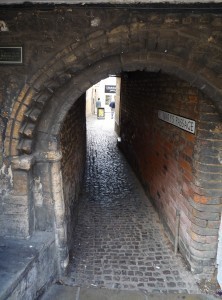 This is a very special part of the country for me. It is where my father’s family came from, and generations have lived and died in the lands surrounding Stamford, and within the town itself. Surprisingly little has changed over time. Shops have come and gone; St Michael’s Church is no longer in commission, and the Museum has shut for good. But behind the Georgian façades - for which the town is justly famous – the town’s layout is largely untouched, and were you to arrive from another era, you might find yourself walking down streets that you recognise, and past churches in which you once worshipped. How fitting that Emma is enthused by all that she has seen and heard when growing up there and, why, given her own genesis, she is obsessed with the past.
This is a very special part of the country for me. It is where my father’s family came from, and generations have lived and died in the lands surrounding Stamford, and within the town itself. Surprisingly little has changed over time. Shops have come and gone; St Michael’s Church is no longer in commission, and the Museum has shut for good. But behind the Georgian façades - for which the town is justly famous – the town’s layout is largely untouched, and were you to arrive from another era, you might find yourself walking down streets that you recognise, and past churches in which you once worshipped. How fitting that Emma is enthused by all that she has seen and heard when growing up there and, why, given her own genesis, she is obsessed with the past.
If you are ever on the Great North Road – the A1 – going north or south, take a detour, and spend a few hours in this historic, beguiling town. It will be time well spent.
November 28, 2012
The Next Big Thing
The lovely Jan Greenough (http://literaryteapot.blogspot.co.uk/) kindly tagged me to take part in the Next Big Thing, which is an online publicity drive for authors where we get to talk about our favourite topic: our latest writing project or Work In Progress (WIP). Then we tag other authors who repeat the process – a bit like a chain letter but without a catch – in one big world-wide literary snowstorm. Or that’s the plan. So, without further ado, here are my answers to the ten Next Big Thing questions:
1. What is the working title of your book?
Death Be Not Proud. It is the second book in the Secret of the Journal serial, following on from Mortal Fire, which was published by Monarch Books last summer.
2. Where did the idea come from for the book?
The series was inspired by my own love of history, mystery, and suspense – with a smattering of romance. History provides so many good stories and human nature hasn’t changed, so combining history and romance is a perfect excuse to indulge.
3. What genre does your book fall under?
Contemporary romantic mystery thriller with a historical twist.
4. Which actors would you choose to play your characters in a movie rendition?
I recently saw Rebecca Hall in Parade’s End and, although the character she played was completely different, she would make a wonderful bright-eyed Emma. Santiago Cabrera would make a great Sam – all smoky seduction and no sense. Milla Jovovich could be vivacious Elena, and the bear would get to play himself. But Matthew is another matter; who on Earth do you get to play an enigma? I have one or two ideas, but yours might be better. Answers on a postcard, please…
5. What is the one-sentence synopsis of your book?
In pursuit of a mysterious journal, independent and self-contained historian, Emma D’Eresby, finds herself in a head-on collision with the past.
6. Will your book be self-published or represented by an agency?
I am very fortunate to be in cahoots with a great publisher, and the contract for Death Be Not Proud is being discussed as I write! Can’t wait to see the artwork – I really like Mortal Fire’s cover, which encapsulates the sense of mystery.
7. How long did it take you to write the first draft of your manuscript?
The first draft of Death Be Not Proud took about nine months and the editing a few more months after that; but tweaking is very tempting – like a bar of chocolate you’ve left sitting in a cupboard which niggles away at the back of your mind when you should be thinking about something else.
8. What other books would you compare this story to within your genre?
That’s a tricky one – perhaps Kate Mosse or Mary Stewart come to mind, although P D James has been mentioned a number of times. Oh, and Donna Fletcher Crow’s Monastery Murders series.
9. Who or What inspired you to write this book?
A broken tomb in a forgotten church in a corner of rural England, centuries of history, and the driving need for people to find love, acceptance, and forgiveness wherever they are, whenever they lived.
10. What else about your book might pique the reader’s interest?
Mortal Fire left many questions unanswered and Emma on an emotional precipice as she recovers from the terrible injuries inflicted by Kort Staahl’s psychotic attack. In Death Be Not Proud the mystery surrounding Matthew deepens as Emma hunts down his past and, in answering many of her questions, she faces unforeseen and potentially catastrophic obstructions to her happiness.
I am tagging the wonderful Fay Sampson (http://www.faysampson.co.uk/) whose latest book: The Overlooker is the fifth in the Suzie Fewings mystery series. Fay is battling the floods in the South West to take part in the Next Big Thing, so she deserves a round of applause to help her along.
SL Russell ( http://www.slrussell.co.uk/ OR suerussellsblog.blogspot.com) has just finished the first draft of an intriguing new work – the first since completing her Leviathan trilogy. Now on her way back from France she will be dropping by to post the answers to the ten questions on the Next Big Thing, so take this opportunity to catch up with her latest news.
Fresh from a successful book launch, Martin Willoughby (http://mwilloughby.blogspot.co.uk/) will reveal his WIP in a completely different dimension. It’s life – but not as you know it…
November 25, 2012
Better late than never…
I thought it high time I brought this blog up-to-date with a bit of news before the year turns the corner and 2013 is up and running with me scampering to catch up.
It’s been a lively couple of months and, what I thought might be a good long stretch of concentrated writing-time, turned into one of those mad dashes to get things done that left me in a hazy blur; among which, meeting a whole host of new people from the UK and USA since Mortal Fire was released in the summer, was a major benefit. Not that I didn’t do any work on my next project – I’m part way through a manuscript as I write, and the trials and tribulations of the characters are keeping me awake at night.
I also had my first opportunity to take part in an on-line interview for the Suspense Zone (http://www.thesuspensezone.com/?s=mortal+fire) which stimulated a few grey cells, followed by a Mortal Fire blog tour for Kregel Publications (http://www.kregel.com) in September, and a host of great reviews
Just the other week DearReader.com – an on-line book club with over 30,000 members – chose Mortal Fire as their ‘good news’ book of the week. This, and the responses from other readers from both sides of the Atlantic, have been very encouraging, and have had me beetling away on the final manuscript for Death Be Not Proud.
Recently, my lovely editor contacted me to ask for a synopsis of Mortal Fire for the beginning of Death Be Not Proud. For those who haven’t managed to get around to reading the first book in the Secret of the Journal serial, or any who might want a quick up-date before reading the second book, this quick synopsis should do the trick.
The question for me was: what should I include? Or more realistically, what should I leave out? Mortal Fire came to a hefty 360 or so pages, taking Emma from her simple, self-contained and rather insulated existence in one moment, to dodging amorous Sam and being stalked by a psychopath in the next. Not to mention the major complication Matthew posed and the questions he refused to answer. And then there were the secrets concealed within the journal itself, which threatened to blow Emma’s solitary world apart. A short synopsis? Hah! I could write a book about it…
The Next Big Thing
Jan Greenough (http://literaryteapot.blogspot.co.uk/) kindly tagged me in for this international on-line author promo and so next week, from Wednesday 28th November, I’ll be answering questions about up-coming projects and tagging five more authors; so why not pop on over and take a look?
Until then…
September 2, 2012
An Interview with Donna Fletcher Crow
I’m delighted to welcome reknowned mystery author, Donna Fletcher Crow as my guest all the way from Idaho in the United States. Donna has just returned from a research trip to Britain, and here tells us about writing her historical mystery GLASTONBURY.
Donna, thank you for joining me…
Writing GLASTONBURY, A Novel of the Holy Grail
An Interview with Donna Fletcher Crow
 Hi Claire, what fun to be here in England today on your blog while you’re 7000 miles away in Idaho as a guest on my blog (http://ning.it/dhRSDI) and neither one of us had to leave home. Isn’t the magic of the internet amazing!
Hi Claire, what fun to be here in England today on your blog while you’re 7000 miles away in Idaho as a guest on my blog (http://ning.it/dhRSDI) and neither one of us had to leave home. Isn’t the magic of the internet amazing!
Since I’ve been answering lots of interviews to prepare for my blog tour to promote the ebook release of GLASTONBURY I thought I would share some of the questions I felt did the best job exploring why and how I wrote it.
1. First of all, please tell us a special something about what makes you “tick.” When you aren’t writing, what are you doing? (Aside from being a mom)
Well, yes, being a wife, mom and grandmother is a huge part of the picture, but I suppose my passion for England has always been a major driving force of my life. My love for English history, literature and landscape certainly played a major part in my writing GLASTONBURY.
2. Describe your book in five words or less.
The subtitle says it: Novel of the Holy Grail
3. You chose a specific genre, a place and time to write about, what made you choose it?
I can’t really say I chose to write an epic, that more just happened. I first envisioned a six-book series, then I read Edward Rutherfurd’s SARUM and saw how my story would work perfectly in that format.
As to place, so many things came together to make me focus on Glastonbury: my lifelong love of the Arthurian legends, my fascination with William Blake’s poem Jerusalem which I first heard as a hymn in the movie “Chariots of Fire”, and then the research trip I took with my editor on another project. We visited Glastonbury and she picked up a pamphlet telling the legend of Joseph of Arimathea bringing Christ to Glastonbury as a child and I was hooked.
4. How much research did you do before and during writing?
In a sense GLASTONBURY is the product of a lifetime of research and reading because I literally grew up on the tales of King Arthur. Before the actual writing I took an extensive research trip to all the places I write about, especially Glastonbury, Tintagel, Dozmary Pool, Hadrian’s Wall, Canterbury, Caerleon. . .
The writing itself took three years and I was continuing my research for each section: Celtic, Roman, Arthurian, Anglo-Saxon, Norman and Tudor through all that time.
5. Is there a message in your novel that you want readers to grasp?
I don’t see it as a message, but one of the things I learned in writing my way through 1500 years of history is that it has so often been much darker than it is today. It’s easy to look at the troubles of our time and despair, but so often throughout history the flame of faith has flickered very low— but it has always rekindled.
6. Which of your characters is most like you?
Well, since GLASTONBURY covers 1500 years of English history, there’s quite a range to choose from. Perhaps I could claim some small kinship with Marie de France since she chose to write about England and wrote about some of the same subjects I cover in GLASTONBURY, such as Arthurian legends and Saint Patrick.
7. If you could cast your book for a movie, who would you choose?
Derek Jacobi would be wonderful as Austin Ringwode, whom history tells us was the last monk of Glastonbury. It is his searching for the Holy Grail that gives my story its structure.
Hmmm— Kenneth Branaugh or Jude Law for King Arthur? Definitely Kieran Knightly for Guenivere. If this were to be filmed it would truly be “a cast of thousands.”
8. I realize this is an 820-page book, but can you summarize it for us?
Joseph of Arimathea and his little band of pilgrims, seeking refuge from Roman persecution, flee to this tiny, sheltered island on the west coast of Britannia, bringing with them their most sacred possession- the Holy Grail;
The holy Isle of Avalon provides refuge for renewal of courage as King Arthur and his knights fight off the invading barbarian hoard, then it becomes his final resting place;
A devastating fire threatens to destroy the work and worship of centuries, but Arthur’s bones provide the impetus for yet more magnificent building, a greater flowering of the faith;
Until the last abbot is drug to his death atop the Tor and the splendid arches are left to crumble.
But still the faithful seek the greatest prize of all- The Holy Grail.
Through all the ages history and legend intertwine around these broken arches, standing a beacon of hope and light for the future.
Donna Fletcher Crow is the author of 40 books, mostly novels dealing with British history. Besides the award-winning Glastonbury, Donna is also the author of The Monastery Murders: A Very Private Grave and A Darkly Hidden Truth, as well as the Lord Danvers series of Victorian true-crime novels and the romantic suspense series The Elizabeth & Richard Mysteries.
Donna and her husband live in Boise, Idaho. They have 4 adult children and 11 grandchildren. She is an enthusiastic gardener. To read more about all of Donna’s books and see pictures from her garden and research trips go to: www.DonnaFletcherCrow.com.
August 18, 2012
MORTAL FIRE
‘It must have happened only minutes before.
The startled birds still circling above the trees from which they had risen were the only witnesses to the last moments of the woman’s life. The impact tore the door from her car and from the twisted remains her eyes stared sightless, lifeless. Shredded shards of metal pierced the airbag – now a deflated bladder onto which her slow blood dripped.’
Mortal Fire winner of GOLD in Adult Romance, ForeWordBook of the Year Awards, 2012
Nominated:Best Fiction Book of the Year, CRT 2012
In this award-winning debut novel and the first book in The Secret Of The Journal series, historian, Emma D’Eresby escapes the predictable safety of her life in Cambridge to seek the journal – the Seventeenth-century diary of an obscure Englishman – a portion of which was left to her by her grandfather. Secreted in the library of a university in Maine, USA, the journal is Emma’s lifelong obsession but, as she takes up the year-long teaching post at the university, she realises that the journal has a rival as she is irresistibly drawn to the enigmatic figure of surgeon, Matthew Lynes. As Emma evades the romantic advances of seductive colleague, Sam Weisner, she becomes aware of a more sinister presence haunting the university. Attacks on woman heighten tension on campus and Emma fears that she is the focus of a stalker’s attention. Suspense mounts on the eve of Halloween with horrific consequences; but where there is darkness there must also be light. Who is Matthew Lynes and what is his connection to the journal?
“If I could say one thing…Read this!” Colin Dexter, creator of ‘Inspector Morse’
“The sense of growing menace will have readers gripping the edge of their seats. The hairs on my neck started to rise as I realised there was only one possible answer to the mystery. A tense and accomplished debut novel blending romance with thriller.” Fay Sampson, award-winning author ‘The Hunted Hare’
“I began MORTAL FIRE one winter evening, with a cup of hot chocolate near at hand. Within a few chapters the chocolate was ignored and had gone cold. CF Dunn writes vivid prose which will hold a reader’s attention to a riveting conclusion. “
Mel Starr, author of ‘The Unquiet Bones’
The post MORTAL FIRE appeared first on C.F.Dunn.
July 16, 2012
Designing a website
Martin Willoughby – a superhero who was once, allegedly, bitten by a radioactive newt – is my very first guest blogger as he entertains and enlightens us on the art of Designing a Website.
 Give me an F. Give me another F. Give me another F. What have you got? Three websites.
Give me an F. Give me another F. Give me another F. What have you got? Three websites.
One of the little known aspects of web design is the way people look at a site when they first come across it. They start at the top, read from left to right, look down the left hand column, then read across the centre of the page…like an F.
This probably has as much to do with the way sites were originally designed as with human nature, but when thinking about your own website it’s as good a place to start as any.
The part across the top of the page is the one that visitors will see first, so it has to make an impact and you have to decide what you want to tell them. For writers this is especially important as it will tell your visitors what kind of books you write and whether they will like them or you. Thriller writers tend to stick to dark colours, romance to pastel colours etc. The lighter your books, the lighter your colouring.
Which font you use across the top will also give a clue to your visitors about your writing and you, though don’t try and over think it. Go with your gut instinct, the same one that helped you write your books, but make sure the words can be easily read.
(A word of warning about using fonts elsewhere on the page. Stick to one, simple, easy to read font or you will confuse the visitor and make the page difficult to, build, download and view)
Down the left hand side you will probably want to put special offers, links for Amazon or bookstores, a short biography. Something that will change over time. Across the middle of the page will be some other important information, such as your latest book release and events linked to it.
Take a look at the blogs you follow and sites you visit. Which ones jar with you and which are easy on the eye? Which ones suit the author/blogger and which ones don’t? Why?
One example of a good website is the BBC iplayer homepage. [http://www.bbc.co.uk/iplayer/] They’ve played with the F design a little by having two strokes across the top (the links at the top and the ‘featured’ items below), but under that you will find a list of channels on the left hand side and the rest of the information to the right in blocks.
Amazon [http://www.amazon.co.uk/] are another case in point here, but they have a thin line at the top, a thin list at the side and then get to the rest of the information on the page around these details.
Of course, a lot of websites break this rule, but only to an extent. They could have multiple left to right lines, such as the BBC Radio 4 webpage [http://www.bbc.co.uk/radio4/], or work in blocks, like Wikipedia [http://en.wikipedia.org/wiki/Main_Page], but they all remember that people read left to right.
So when you think about your website, keep anything REALLY important on the left hand side, as that’s where your readers are going to look first, and choose your colours and title font carefully.
Other than that, let your creative juices flow.
Martin is a part-time author, full time father and PC security specialist with a love of gadgets he wishes he could afford. He writes SF & SF Comedy, has two books on Amazon (one under the pen name of Willaby) and is a co-founder of the Starfish Publishing Co-Operative (www.starfishpc.co.uk).
July 6, 2012
Blogger’s Block
Blow this for a barrel of laughs. Here am I trying to think up an interesting subject for my first blog – and here are you – yes, you, dear reader – who probably stumbled over this by accident when you were placing your order for Tesco/Sainsbury’s/Waitrose (delete according to aspiration).
Attention Seeking
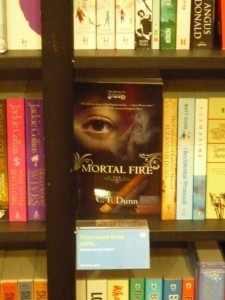 Now you’re here, tell me one thing: why read? I mean, what entices you to select a book from among the hundreds of thousands out there in book-land?
Now you’re here, tell me one thing: why read? I mean, what entices you to select a book from among the hundreds of thousands out there in book-land?
What makes you open the first page, and then stick with it to the end? Curiosity? Determination? A sense of duty that once started you must finish? What marks out a book for success – what sets it apart from all those others?
These are not idle questions but ones which many writers contemplate as they bash out their next masterpiece. To wildly mix metaphors (because it’s not allowed and because I want to), there are some long-standing authors about whom you can detect that writing has become a chore, when a certain recipe which has worked before is trotted out again. Writing is stale, storylines take on the semblance of distant cousins and, through inter-breeding and repetition, give rise to unwelcome features. Language depleted, taste-buds jaded, and that which once sparkled, loses its allure.
Shining Opportunity
For others, each page is an opportunity to shine. The writing remains fresh and the language evocative. Like a new dish, each turn of a page is an adventure. Some authors manage to keep their writing alive and kicking because they relish the writing process and the prospect of entertaining their readers. Others have a message and use their gifts to deliver it.
Giveaway – UK
So, I’m curious – whatever makes you pick up a book and read it? Let me know what you are reading, and why you chose to read it and, for the most convincing answer, I’ll send you a free signed copy of Mortal Fire to tickle your peepers and keep you reading.
Giveaway – USA
For an opportunity for visitors from the United States to receive a copy of Mortal Fire, Kregel Publications has organised a giveaway. Follow the link below and see where it takes you…
http://www.goodreads.com/giveaway/sho...
April 23, 2012
Book Launch
Books in boxes, dress ironed, shoes bought (you should see the colour!). I’m all set for the book launch tomorrow and looking forward to it!

